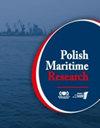船用柴油机气缸燃烧的高质量多区域三维CFD模型
IF 2
3区 工程技术
Q2 ENGINEERING, MARINE
引用次数: 1
摘要
摘要本文介绍了一个大型四冲程船用发动机气缸内过程的三维模型。该模型基于对移动网格进行的CFD计算。建模范围包括完整的工作循环(720°曲轴位置)以及带有进气管和排气管的气缸的完整几何形状。输入数据、边界条件和验证数据是通过对真实物体的直接测量获得的。燃料喷射特性是通过在固定容积室中的Mie散射测量获得的。建模结果已根据发动机气缸在整个负载范围内的压力特性进行了验证。最大燃烧压力和MIP(平均指示压力)的平均误差分别不超过1.42%和1.13%。该模型在废气的O2和NOx含量方面也得到了积极的验证。在这种情况下,排气中NOx馏分的平均误差为1.2%,O2馏分的平均错误为0.4%。完整的模型数据已在开放获取的基础上在研究数据库中提供。本文章由计算机程序翻译,如有差异,请以英文原文为准。
High Quality Multi-Zone and 3D CFD Model of Combustion in Marine Diesel Engine Cylinder
Abstract The paper presents a 3D model of the processes taking place in the cylinder of a large 4-stroke marine engine. The model is based on CFD calculations performed on the moving mesh. The modelling range includes the full duty cycle (720° crankshaft position) and the complete geometry of the cylinder with inlet and exhaust ducts. The input data, boundary conditions and validation data were obtained by direct measurements on the real object. Fuel injection characteristics were obtained by Mie scattering measurements in a fixed-volume chamber. The modelling results have been validated in terms of the pressure characteristics of the engine’s cylinder within the entire range of its loads. The mean error did not exceed 1.42% for the maximum combustion pressure and 1.13% for the MIP (Mean Indicated Pressure). The model was also positively validated in terms of the O2 and NOx content of the exhaust gas. The mean error in this case was 1.2% for NOx fractions in the exhaust gas and 0.4% for O2 fractions. The complete model data has been made available in the research data repository on an open access basis.
求助全文
通过发布文献求助,成功后即可免费获取论文全文。
去求助
来源期刊

Polish Maritime Research
工程技术-工程:海洋
CiteScore
3.70
自引率
45.00%
发文量
20
审稿时长
>12 weeks
期刊介绍:
The scope of the journal covers selected issues related to all phases of product lifecycle and corresponding technologies for offshore floating and fixed structures and their components.
All researchers are invited to submit their original papers for peer review and publications related to methods of the design; production and manufacturing; maintenance and operational processes of such technical items as:
all types of vessels and their equipment,
fixed and floating offshore units and their components,
autonomous underwater vehicle (AUV) and remotely operated vehicle (ROV).
We welcome submissions from these fields in the following technical topics:
ship hydrodynamics: buoyancy and stability; ship resistance and propulsion, etc.,
structural integrity of ship and offshore unit structures: materials; welding; fatigue and fracture, etc.,
marine equipment: ship and offshore unit power plants: overboarding equipment; etc.
 求助内容:
求助内容: 应助结果提醒方式:
应助结果提醒方式:


